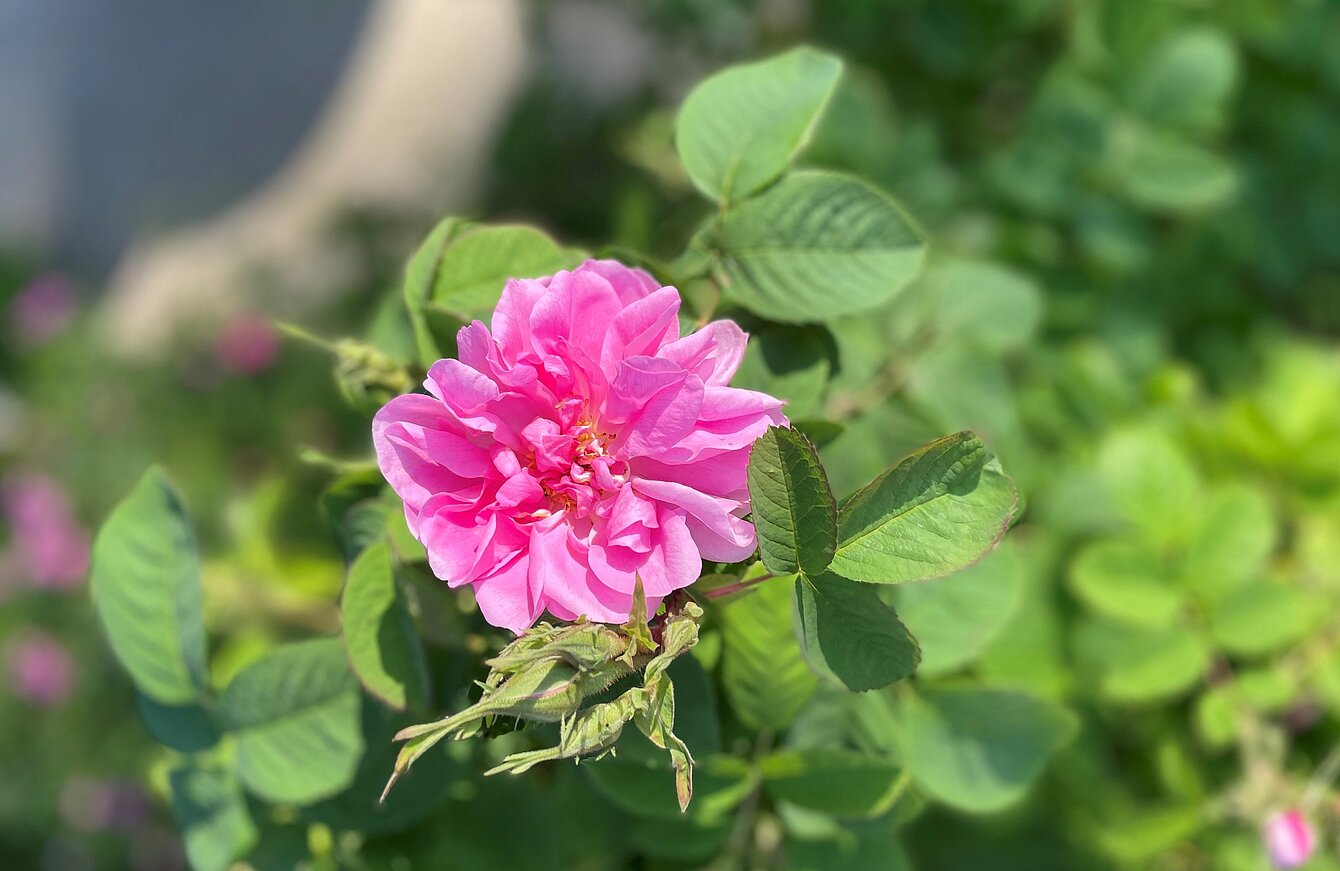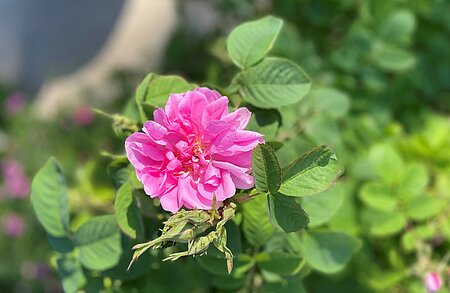The oldest roses have been known since ancient times. Grown in Mesopotamia and Egypt, they were already cultivated to excess and imported from Egypt – in entire shiploads – in the days of the Roman Empire. Regarded as symbols of luxury, they were used as decorations at all kinds of festivals and celebrations, and they were used in many different forms. Hence the Gardens of Paestum, noted for their beauty, became a popular place to visit during the flowering season. Rome had garden roses such as Rosa gallica and Rosa x damascena. The most prized rose of all was the repeat-flowering "Rose of Cyrene" (Pliny), probably Rosa x bifera, called the Autumn Damask. It survived the fall of the Roman Empire, was brought to France during the crusades, and has been known as the "Rose des Quatre Saisons", or "Four Seasons", ever since the 13th century.
Despite all this, only a few rose varieties or classes were known in Europe up to early modern times:
Rosa ALBA. The White Rose, a hybrid of unknown origin even though it has been known since ancient times. Alba roses are robust, particularly winter-hardy shrubs. They grow almost two metres high, feature grey-green leaves and have a refined, not very intensive fragrance. The colour range is from white to delicate pink.
Rosa GALLICA. The French Rose, one of the oldest cultivated varieties and particularly important for medicinal purposes and perfumes. Rosa gallica Officinalis, the Apothecary’s Rose, was grown in all the monastic herbaria of medieval times. Its two-coloured mutation, Rosa gallica Versicolor – the famous "Rosa mundi" – is still one of the most distinctive flowers today. Gallicas are highly fragrant and very hardy, vigorous shrubs. Hues range from pink to mauve.
Rosa x DAMASCENA. The Damask Rose, a natural hybrid from Rosa gallica and Rosa moschata, has also been known since ancient times. After returning to Europe with the crusaders, this rose was soon cultivated for its wonderful fragrance and the rose oil which could be obtained from it.
Rosa CENTIFOLIA. Centifolias or cabbage roses with “one hundred” petals. These already complex hybrids were particularly cultivated in 17th - 18th century Holland. The rose has huge, closely packed flowers and features a wonderful fragrance on high, rather lanky shrubs. It is the classic rose of Baroque flower painting.
Rosa CENTIFOLIA MUSCOSA. The moss rose, with its characteristic “mossy” sepals, emerged prior to 1720 through natural mutation in centifolias.





















